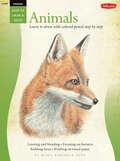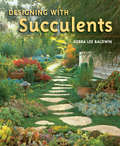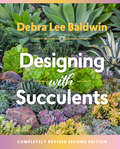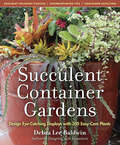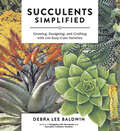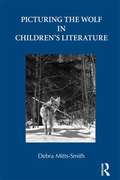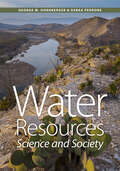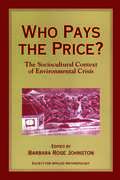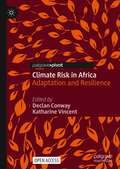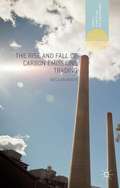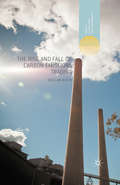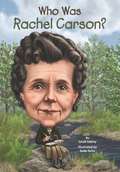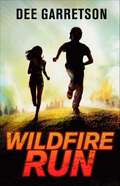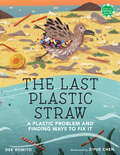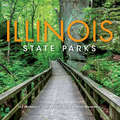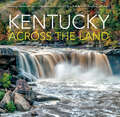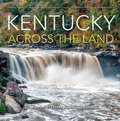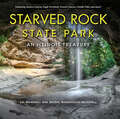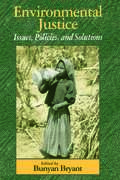- Table View
- List View
Drawing: Learn How to Draw with Colored Pencil, Step-by-Step (How to Draw & Paint)
by Debra Kauffman YaunAn easy to read, how-to guide with complete instructions for creating lifelike portraits of wild and domestic animals using colored pencils.In this comprehensive, thirty-two–page book, accomplished artist Debra Kauffman Yaun shares her artistic insights and techniques for creating strikingly realistic animal drawings in colored pencil. The book opens with essential information on choosing tools and materials, understanding color theory, and creating basic pencil strokes. It then covers special colored pencil techniques, such as hatching, burnishing, layering, and blending. Finally, the author demonstrates how to accurately depict an assortment of adorable animals—including favorite family pets, wildlife, and birds—in a series of clear, step-by-step lessons. In-depth, easy-to-follow instructions allow aspiring artists to develop their drawing skills, guiding them from simple sketches to the final flourishes.
Freaky, Funky Fish: Odd Facts about Fascinating Fish
by Debra Kempf ShumakerFrom zapping, stinging, even singing, to playing dead or having a see-through head, discover the interesting things different fish do to survive in this delightful non-fiction picture book. Fish have fins and gills and tails. All fish swim and most have scales. But not all fish act or look the same. From zapping, stinging, even singing, Freaky, Funky Fish: Odd Facts about Fascinating Fish is an adorable picture book with a scientific—and child-friendly—underpinning. With examples of different fish for each description, as well as extensive backmatter explaining the fascinating science behind these variety of fish, this funky book captures the wonder of our ecosystem.
Peculiar Primates: Fun Facts About These Curious Creatures
by Debra Kempf ShumakerFrom flossing and howling, to building nests and thumping chests, this delightful follow up to Freaky, Funky Fish explores the amazing things primates do. All primates climb and breathe in air. They have big brains and hands and hair. But. . . some live alone, some live in groups. One primate has a nose that droops. Peculiar Primates is an adorable picture book with a scientific—and child-friendly—underpinning. With examples of different primates for each description, as well as extensive backmatter explaining the fascinating science behind their behaviors, this bizarre book captures the wonders of our ecosystem.
From Flood Control to Integrated Water Resource Management
by Debra Knopman Sara Hajiamiri Mengjie Wu James P. KahanThe loss of life and devastation in the Gulf coast region of the United States after the hurricane season of 2005 has led to considerable debate about how to recover from the damage and mitigate damage from future incidents. This document reports the experiences of four major floods since 1948 (two in the United States, one in the Netherlands, and one in China), to draw lessons for the Gulf coast restoration effort.
Designing with Succulents: 10th Anniversary Edition
by Debra Lee BaldwinLavishly illustrated with over 300 photographs, Designing with Succulents gives design and cultivation basics for paths, borders, slopes, and containers; hundreds of succulent plant recommendations; and descriptions of 90 easy-care, drought-tolerant companion plants. Beginners and experienced designers, landscapers, and collectors alike will find what they need to visualize, create, and nurture the three-dimensional work of art that is the succulent garden.
Designing with Succulents: Create A Lush Garden Of Waterwise Plants
by Debra Lee Baldwin“Designing with Succulents is inspiring, practical, and complete—a treasure for any gardener who loves these otherworldly beauties.” —Kathleen N. Brenzel, Sunset Succulents offer dazzling possibilities and require only minimal maintenance and very little water to remain lush and alluring year-round. No one knows them better than the Queen of Succulents, Debra Lee Baldwin. This new, completely revised second edition of her bestselling classic is a design compendium that is as practical as it is inspirational. Designing with Succulents shares design and cultivation basics; hundreds of succulent plant recommendations; and profiles of 50 easy-care, drought-tolerant companion plants. Lavishly illustrated with 400 photographs, you will find everything you need to visualize, create, and nurture a thriving, water-smart succulent garden.
Succulent Container Gardens: Design Eye-Catching Displays with 350 Easy-Care Plants
by Debra Lee BaldwinDefine your individual style. With their colorful leaves, sculptural shapes, and simple care, succulents are beautiful yet forgiving plants for pots. If grown in containers, these dry-climate jewels—which include but are not limited to cacti—can be brought indoors in winter and so can thrive anywhere in the world. In this inspiring compendium, the popular author of Designing with Succulents provides everything beginners and experienced gardeners need to know to create stunning container displays of exceptionally waterwise plants. The extensive palette includes delicate sedums, frilly echeverias, cascading senecios, edgy agaves, and fat-trunked beaucarneas, to name just a few. Easy-to-follow, expert tips explain soil mixes, overwintering, propagation, and more.
Succulents Simplified: Growing, Designing, and Crafting with 100 Easy-Care Varieties
by Debra Lee BaldwinSucculents are hot. And Debra Lee Baldwin, the bestselling author of Designing with Succulents and Succulent Container Gardens, is the ideal guide for gardeners, crafters, and DIYers looking for an introduction to these trendy, low-maintenance, drought-tolerant plants. Along with gorgeous photos packed with design ideas, Debra offers her top 100 plant picks and explains how to grow and care for succulents no matter where you live. Step-by-step projects, including a cake-stand centerpiece, special-occasion bouquets, a vertical garden, and a succulent topiary sphere, will inspire you to express your individual style. Whether you’re a novice or veteran, have an acre to fill or a few pots, live in Calexico or Canada, Succulents Simplified is a dazzling primer for success with succulents wherever you live!
Picturing the Wolf in Children's Literature (Children's Literature and Culture #69)
by Debra Mitts-SmithFrom the villainous beast of “Little Red Riding Hood” and “The Three Little Pigs,” to the nurturing wolves of Romulus and Remus and Rudyard Kipling’s The Jungle Book, the wolf has long been a part of the landscape of children’s literature. Meanwhile, since the 1960s and the popularization of scientific research on these animals, children’s books have begun to feature more nuanced views. In Picturing the Wolf in Children’s Literature, Mitts-Smith analyzes visual images of the wolf in children’s books published in Western Europe and North America from 1500 to the present. In particular, she considers how wolves are depicted in and across particular works, the values and attitudes that inform these depictions, and how the concept of the wolf has changed over time. What she discovers is that illustrations and photos in works for children impart social, cultural, and scientific information not only about wolves, but also about humans and human behavior. First encountered in childhood, picture books act as a training ground where the young learn both how to decode the “symbolic” wolf across various contexts and how to make sense of “real” wolves. Mitts-Smith studies sources including myths, legends, fables, folk and fairy tales, fractured tales, fictional stories, and nonfiction, highlighting those instances in which images play a major role, including illustrated anthologies, chapbooks, picture books, and informational books. This book will be of interest to children’s literature scholars, as well as those interested in the figure of the wolf and how it has been informed over time.
Water Resources: Science and Society
by George M. Hornberger Debra PerroneA scientifically rigorous text grounded in socioeconomic reality that examines both physical hydrology and contemporary water usage issues.The fair allocation and wise use of fresh water presents significant challenges across the world. To avoid unresolvable crises in the future, judiciously managing water resources in the twenty-first century is fundamentally important. Integrating the underlying science of hydrology with real-world usage scenarios, Water Resources offers a nuanced, modern treatment of contemporary water resource management issues.In this ground-breaking new text, renowned environmental scientist and educator George M. Hornberger and award-winning environmental engineer Debra Perrone examine the role of water resources in natural, social, and human-built systems, helping students understand and evaluate the complex tradeoffs required to achieve sustainable water management. Providing a much-needed educational tool that looks at freshwater resources within the context of the crucial water-energy-food nexus, the text • includes a primer on the elements of physical hydrology necessary to understand resource availability; • covers rivers, lakes, groundwater, and soil water;• relates water to agriculture, energy, urbanization, and the environment;• highlights connections between water quantity and quality; • explains the economic and legal constraints around water resources; • considers the impacts of climate change and population growth; and• proposes paths forward for the sustainable use of water.Teaching basic methods used to make informed water management decisions, the book includes illustrative quantitative calculations, qualitative think-pieces, and case studies. An appendix provides a review of units, dimensions, and conversions useful for addressing each chapter's example problems. Online answer keys are also available.Positioned to become the foremost text on water resource issues, this companion to Hornberger's widely regarded Elements of Physical Hydrology reveals the enormity of the water crisis facing the planet while offering realistic hope.
The Routledge Companion to Joseph Conrad (Routledge Literature Companions)
by Debra Romanick BaldwinThe Routledge Companion to Joseph Conrad attests to the global significance and enduring importance of Conrad’s works, reception, and legacy.This volume brings together an international roster of scholars who consider his works in relation to biography, narrative, politics, women’s studies, comparative literature, and other forms of art. They offer approaches as diverse as re-examining Conrad’s sea voyages using newly available digital materials, analyzing his archipelagic narrative techniques, applying Chinese philosophy to Lord Jim, interrogating gendered epistemology in the neglected story “The Tale,” considering Conrad alongside W.E.B. Du Bois, Graham Greene, Virginia Woolf, or Orhan Pamuk, or alongside sound, gesture, opera, graphic novels, or contemporary events.An invaluable resource for students and scholars of Conrad and twentieth-century literature, this groundbreaking collection shows how Conrad’s works – their artistry, vision, and ideas – continue to challenge, perplex, and delight.
Who Pays the Price?: The Sociocultural Context Of Environmental Crisis
by Jason Clay Susan Dawson Roy Rappaport Debra Schindler William Derman Gregory ButtonDrawing from a Society for Applied Anthropology study on human rights and the environment, Who Pays the Price? provides a detailed look at the human experience of environmental crisis. The issues examined span the globe -- loss of land and access to critical resources; contamination of air, water and soil; exposure to radiation, toxic chemicals, and other hazardous wastes. Topics considered in-depth include: human rights and environmental degradation nation-state struggles over indigenous rights rights abuse accompanying resource extraction, weapons production, and tourism development environmental racism, gender bias, and multinational industry double standards social justice environmentalism The book incorporates material from a wide range of economic and geographic contexts, including case studies from China, Russia, Latin America, the United States, Canada, Africa, and the South Pacific.
Climate Risk in Africa: Adaptation and Resilience
by Declan Conway Katharine VincentThis open access book highlights the complexities around making adaptation decisions and building resilience in the face of climate risk. It is based on experiences in sub-Saharan Africa through the Future Climate For Africa (FCFA) applied research programme. It begins by dealing with underlying principles and structures designed to facilitate effective engagement about climate risk, including the robustness of information and the construction of knowledge through co-production. Chapters then move on to explore examples of using climate information to inform adaptation and resilience through early warning, river basin development, urban planning and rural livelihoods based in a variety of contexts. These insights inform new ways to promote action in policy and praxis through the blending of knowledge from multiple disciplines, including climate science that provides understanding of future climate risk and the social science of response through adaptation.The book will be of interest to advanced undergraduate students and postgraduate students, researchers, policy makers and practitioners in geography, environment, international development and related disciplines.
The Rise and Fall of Carbon Emissions Trading (Energy, Climate and the Environment)
by Declan KuchThe Rise and Fall of Carbon Emissions Trading.
The Rise and Fall of Carbon Emissions Trading (Energy, Climate and the Environment)
by Declan KuchThis book presents the results of the first full-scale emissions trading schemes in Australia and internationally, arguing these schemes will not be sufficient to 'civilize markets' and prevent dangerous climate change. Instead, it articulates the ways climate policy needs to confront the collective nature of our predicament.
Who Was Rachel Carson? (Who was?)
by Nancy Harrison Sarah Fabiny Dede PutraThough she grew up in rural Pennsylvania, Rachel Carson dreamed of the sea. In 1936 she began work with the Bureau of Fisheries and soon after published Under the Sea Wind, her first of many nature books. Her 1962 bestseller, Silent Spring, sent shockwaves through the country and warned of the dangers of DDT and other pesticides. A pioneering environmentalist, Rachel Carson helped awaken the global consciousness for conservation and preservation.
Wildfire Run
by Dee GarretsonThe president's retreat, Camp David, is one of the safest places in the United States. So why can't the President's son, Luke, and his friends Theo and Callie stay there without Secret Service agents constantly hovering over them, watching their every move? And yet, when an earthquake sets off a raging wildfire, causing a chain reaction that wreaks havoc at Camp David, they are suddenly on their own.Now Luke needs a plan:To override the security systemsTo save those who were supposed to save himTo get through an impassable gateTo escape Camp DavidDebut author Dee Garretson delivers a heart-pounding tween thriller—an action-packed adventure with undeniable suspense.
The Last Plastic Straw: A Plastic Problem and Finding Ways to Fix It (Books for a Better Earth)
by Dee RomitoLearn how and why a useful, 5000-year-old invention has become a threat to our planet—and what you can do about it—in this history of the simple straw. <P><P> From reeds used by ancient Sumerians to bendy straws in World War II hospitals, people have changed the straw to fit their needs for 5000 years. Today however, this useful tool is contributing to the plastic problem polluting our oceans. Once again, the simple straw needs a reinvention. <P><P> With bright illustrations and well-researched text, children can read about the inventors behind the straw’s technological advancements, including primary sources like patents, as well as how disposable plastic harms the environment. See the newest solutions, from plastic straw alternatives to activism by real kids like Milo Cress who started the Be Straw Free campaign when he was 11 years old. <P><P> Learn about what kids can do to reduce plastic waste. The backmatter includes more information on the movement to stop plastic waste, action items kids can do, a bibliography, and additional resources on plastic pollution. <P><P><i>Advisory: Bookshare has learned that this book offers only partial accessibility. We have kept it in the collection because it is useful for some of our members. Benetech is actively working on projects to improve accessibility issues such as these.</i>
Illinois State Parks
by Lee Mandrell DeeDee Niederhouse-MandrellDiscover the breathtaking beauty and unforgettable adventures that await in Illinois state parks. Lee Mandrell and DeeDee Niederhouse-Mandrell highlight the incredible diversity and natural beauty of the landscapes, flora, and fauna of the state. Marvel at the unique rock formations and 55 foot opening at Cave-In-Rock State Park, or leave the land behind to explore the waterways at Chain O’ Lakes State Park. Step into history at Fort Massac State Park, or sit back and enjoy a striking sunset over the cypress grove at Eldon Hazlet State Park, Illinois’ largest campground. Just in time for the state bicentennial, Illinois State Parks brings together more than 130 gorgeous full-color photographs highlighting some of the most beautiful and popular state parks in Illinois.
Kentucky Across the Land
by Lee Mandrell DeeDee Niederhouse-MandrellTransport yourself to the Bluegrass State with this photographic tribute to iconic spots from Mammoth Cave National Park to Buffalo Trace Distillery.Known for its rolling hills, scenic Thoroughbred farms, and renowned state parks, Kentucky offers enjoyment for those seeking stunning landscapes, natural wonders, small town charms, and bourbon country adventures. Follow photographers Lee Mandrell and DeeDee Niederhouse-Mandrell on a visual journey across the Bluegrass State, as they travel from Cumberland Falls State Resort Park to Mammoth Cave and National Bridge National Parks, showcasing the exquisite scenery and natural heritage along the way.Featuring more than 130 breathtaking photos, Kentucky Across the Land inspires travelers to take their own journeys to explore the history at the Lincoln Homestead State Resort Park, the untouched natural beauty of Red River Gorge and Land Between the Lakes, or the picturesque cascades along Flat Lick Creek at Flat Lick Falls.
Kentucky Across the Land
by Lee Mandrell DeeDee Niederhouse-MandrellTransport yourself to the Bluegrass State with this photographic tribute to iconic spots from Mammoth Cave National Park to Buffalo Trace Distillery.Known for its rolling hills, scenic Thoroughbred farms, and renowned state parks, Kentucky offers enjoyment for those seeking stunning landscapes, natural wonders, small town charms, and bourbon country adventures. Follow photographers Lee Mandrell and DeeDee Niederhouse-Mandrell on a visual journey across the Bluegrass State, as they travel from Cumberland Falls State Resort Park to Mammoth Cave and National Bridge National Parks, showcasing the exquisite scenery and natural heritage along the way.Featuring more than 130 breathtaking photos, Kentucky Across the Land inspires travelers to take their own journeys to explore the history at the Lincoln Homestead State Resort Park, the untouched natural beauty of Red River Gorge and Land Between the Lakes, or the picturesque cascades along Flat Lick Creek at Flat Lick Falls.
Starved Rock State Park: An Illinois Treasure
by Lee Mandrell DeeDee Niederhouse-Mandrell“Capture[s] the spirit and nature of the park without showing more than footprints from the park’s 2.5 million visitors per year.” —The Times (ShawLocal.com)Nestled along the Illinois River, Starved Rock State Park is a favorite destination no matter the season. This National Historic Landmark boasts a landscape filled with tall bluffs, elegant trees, and wildflower-adorned hills, perfect for the adventurer inside us all.In Starved Rock State Park: An Illinois Treasure, photographers Lee Mandrell and DeeDee Niederhouse-Mandrell showcase the beauty and grandeur of this Illinois state park. With photos of twisting forest trails, plunging canyons, and lakes veiled in mist, they uncover this land piece by piece. Hike to take in the view at Lover’s Leap Overlook or relish the waterfalls that come roaring out from canyons with names like “Wildcat” and “St. Louis.” Come explore this park thriving with life. From hawks soaring across crisp blue skies and snakes slinking over bramble to folksy log cabins and meadows of black-eyed Susans, there is a little something for everyone.With 120 high-quality color photos and an appreciation of the finer details in life, Starved Rock State Park will transport you to a land rich with history and wonder.
Starved Rock State Park: An Illinois Treasure
by Lee Mandrell DeeDee Niederhouse-Mandrell“Capture[s] the spirit and nature of the park without showing more than footprints from the park’s 2.5 million visitors per year.” —The Times (ShawLocal.com)Nestled along the Illinois River, Starved Rock State Park is a favorite destination no matter the season. This National Historic Landmark boasts a landscape filled with tall bluffs, elegant trees, and wildflower-adorned hills, perfect for the adventurer inside us all.In Starved Rock State Park: An Illinois Treasure, photographers Lee Mandrell and DeeDee Niederhouse-Mandrell showcase the beauty and grandeur of this Illinois state park. With photos of twisting forest trails, plunging canyons, and lakes veiled in mist, they uncover this land piece by piece. Hike to take in the view at Lover’s Leap Overlook or relish the waterfalls that come roaring out from canyons with names like “Wildcat” and “St. Louis.” Come explore this park thriving with life. From hawks soaring across crisp blue skies and snakes slinking over bramble to folksy log cabins and meadows of black-eyed Susans, there is a little something for everyone.With 120 high-quality color photos and an appreciation of the finer details in life, Starved Rock State Park will transport you to a land rich with history and wonder.
Environmental Justice: Issues, Policies, and Solutions
by Jamal Kadri Robert Wolcott William Drayton Deeohn Ferris Roger Bezdek Kelly AlleyIn Environmental Justice, leading thinkers of the environmental justice movement take a direct look at the failure of "top down" public policy to effectively deal with issues of environmental equity.The book provides a startling look at pressing social and environmental problems and charts a course for future action. Among the topics considered are: the history of the social justice movement the role of the professional in working with community groups methods of dealing with environmental problems at the international level participatory national policy for environmental education, energy, industrial development, and housing and sustainable development.Contributors include Robert Bullard, Deeohn Ferris, Tom B.K. Goldtooth, David Hahn-Baker, Beverly Wright, Ivette Perfecto, Patrick West, and others.
Socio-Ecological Systems and Decoloniality: Convergence of Indigenous and Western Knowledge
by Deepa Pullanikkatil Kerry HughesThis contributed volume provides case studies from around the world that feature a convergence of indigenous and western knowledge in an attempt to understand complex socio-ecological systems. The book provides an understanding of socio-ecological systems in an ethical space using a 'Decoloniality' approach (i.e. untangling the production of knowledge from a primarily Eurocentric episteme). The work presented here integrates and merges indigenous knowledge with western science, thereby building on the strengths of each in service of understanding these systems. The editors of this volume approach indigenous communities and scientists as equal knowledge-holders and, in doing so, contributes towards improved understanding of socio-ecological systems and interactions in cross-cultural contexts. This volume will be of interest to scientists, instructors, students and policy makers across disciplines such as environmental sciences, social sciences, interdisciplinary studies, cultural studies, ethnobotany, anthropology and plant genetic resources.
